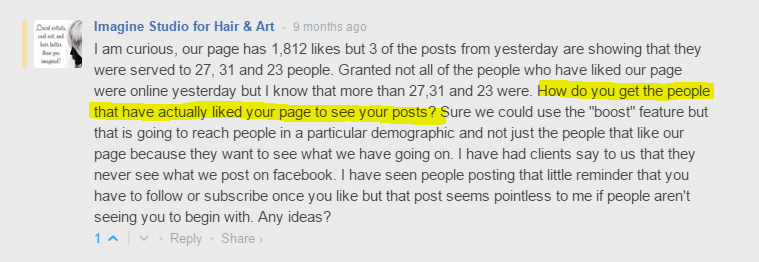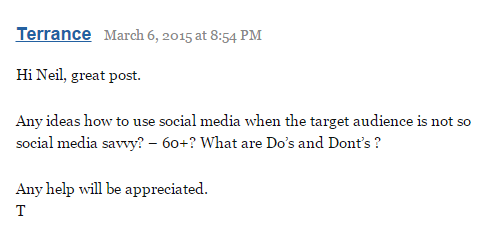-
 8 min. read
8 min. read
-
 Trevin Shirey
Trevin Shirey VP of Marketing
VP of Marketing
- Trevin serves as the VP of Marketing at WebFX. He has worked on over 450 marketing campaigns and has been building websites for over 25 years. His work has been featured by Search Engine Land, USA Today, Fast Company and Inc.
Downloadable ebooks, whitepapers, and guides are extremely powerful pieces of content. You’ve seen how well these items work from a lead generation standpoint, and now it’s your turn to get a piece of the pie. Problem is, you have no idea what to write an ebook about.
Or if anyone would find your industry whitepapers worth reading, much less clicking a pop-up or opting into an email list for. And no matter what you do, you can’t seem to brainstorm an idea for a piece of content that hasn’t already been addressed by twenty different websites. Business owners struggle with this brainstorming process all the time. But it’s entirely possible to learn how to come up with ideas for ebooks, whitepapers, and other downloadable content — and to make this a repeatable process that you can do over and over again.
In fact, the methods I’m going to share in this post have the potential to last you for years. Let’s explore some of the best ways you can generate effective ideas for your content and get more qualified leads than ever.
Read the comments
Comments on your blog aren’t just a way to engage with your readers and answer questions.
They’re a fantastic source of ideas that are practically guaranteed to be successful. Why do comments lend themselves so well to brainstorming whitepaper and ebook topics? It’s because they’re from your readers — the audience of engaged, interested followers you already have.
When someone asks you a question, you already know your target audience is interested in the answer, and the topic that surrounds it. For example, when we made a post about Facebook’s (temporary) removal of Instagram insights and the “boost” option, we got a great question in the comments:  “How do you get the people that have actually liked your Page to see your posts?” Aha! This could serve as the inspiration for a fantastic ebook called “How to Get More Facebook Fans to See Your Posts.” We know many of our followers work with Facebook (or manage someone who does), so this is a perfect fit.
“How do you get the people that have actually liked your Page to see your posts?” Aha! This could serve as the inspiration for a fantastic ebook called “How to Get More Facebook Fans to See Your Posts.” We know many of our followers work with Facebook (or manage someone who does), so this is a perfect fit.
You don’t have to limit your research to your own site and readers, however. You can poke around websites in your industry to find questions posed to other bloggers or businesses. As long as they’re relevant to what you do, they’re likely to appeal to your readers.
Sticking with the social media theme, I found this comment on a recent QuickSprout post about getting more social clickthroughs:  Since QuickSprout’s readership is similar to ours, we could always produce a guide based on this comment with a high amount of confidence in its success. We could do something broad like “How to Reach Your Ideal Target Audience on Social Media,” or finely targeted like “How to Reach Seniors on Social.”
Since QuickSprout’s readership is similar to ours, we could always produce a guide based on this comment with a high amount of confidence in its success. We could do something broad like “How to Reach Your Ideal Target Audience on Social Media,” or finely targeted like “How to Reach Seniors on Social.”
Check Google Analytics
What are the most popular pages, articles, or blog posts on your website? The answer to this question can help you create incredibly successful content that comes with a captive audience.
If you have a piece of content that ranks well on search engines, you can capitalize on it to both come up with ideas and direct traffic to an ebook or whitepaper. The idea is to expand on your original content (even just a little!) and offer a new version that visitors are likely to show interest in downloading or purchasing.  To use WebFX as an example again, we have a post on the cost of advertising nationally that, according to GA, is currently very popular.
To use WebFX as an example again, we have a post on the cost of advertising nationally that, according to GA, is currently very popular.
The information offered is kept up to date, and presented in a neat format. But aside from a spreadsheet version of the data, we don’t offer visitors to this post all that much. If we wanted to capitalize on the traffic coming to this post, we could think about what visitors are looking for (the cost of advertising) and the intent behind their search (can I afford…?).
We could then create something based on that, like a PDF guide to planning a balanced advertising budget, or an informative whitepaper on the current cost of marketing methods in the US. Finally, we could add the link right to the post, so readers can access the information immediately. Take a look at your most popular pages in Google Analytics, and look for opportunities to turn more of the visitors you’re already attracting into leads.
Look for gaps
This next tactic can be used for blog post ideas as well as ebook and whitepaper ideas, but it’s one of my favorites — despite being a bit more time-intensive — so I feel it’s worth including. Every now and then you might go out and read blog posts or articles written by others in your industry and feel… less than impressed.
Sometimes a writer will cover a new topic, but they’ll do so in a manner that doesn’t even come close to cutting it.  Rather than getting irritated, you should take action. Look for the gaps in their content and jot them down somewhere.
Rather than getting irritated, you should take action. Look for the gaps in their content and jot them down somewhere.
For example, if someone writes a guide to dog training but completely leaves out the absolutely necessary section on teaching a dog to heel while walking on a leash, make a note of that and don’t forget about it. When you’ve noted a couple of these gaps, look around online. Has anyone written anything useful about this topic?
Or are all the guides and blog posts out there missing this substantial amount of information? Is it something that people would be interested in, and a topic that would help you generate leads? If you’re a dog trainer, and you can’t locate any substantial guides to teaching a leashed dog to heel, this is a perfect opportunity for you.
Create content that fills this gap and promote it everywhere you can think of.
Combine multiple pieces
If you write content or maintain a blog about a specific industry or topic, you probably have several pieces about specific, targeted ideas. One way to create download-worthy content in a flash is to combine these smaller pieces into one cohesive document.
For example, someone who runs a fashion blog may have individual posts like:
- How to Repurpose the Clothing in Your Closet
- How to Match Your Outfit to Your Shoes
- How to Pair Clothing Colors and Patterns
It wouldn’t take much work to combine these three individual pieces into one cohesive ebook called “How to Put Outfits Together” or “How to Create Looks That Work.” As a bonus, it would also be easy to add links to this new piece of content at the end of each of the three individual pieces. So if someone gets to the end of the post about pairing colors and patterns, the blogger could say “I have much more advice on creating outfits from the clothing you already own in this ebook!” and provide a link. Someone who’s already consumed (and enjoyed) your content is much more likely to click on a call to action like that.
As a bonus, it would also be easy to add links to this new piece of content at the end of each of the three individual pieces. So if someone gets to the end of the post about pairing colors and patterns, the blogger could say “I have much more advice on creating outfits from the clothing you already own in this ebook!” and provide a link. Someone who’s already consumed (and enjoyed) your content is much more likely to click on a call to action like that.
Think about how you can combine some of your best content into a more cohesive piece, and who that new piece would appeal to the most.
Other ways to get ideas
The four ideas above should give you a big head start on brainstorming for your next ebook, whitepaper, or PDF. However, everyone’s bound to run into a rut sooner or later.
Here are a few more quick methods you can use to brainstorm click-worthy content ideas:
- Spy on your competitors — Read the content your competitors are producing, and look for ways to one-up them
- Expand on a blog post — Find a post that’s been somewhat successful, produce an ebook version with more content, and make it available as a download (in exchange for an email address, of course)
- Survey your visitors, leads, and customers — Ask what they need or want to know about, then produce content to match
- Talk to your coworkers — What problems have they run into? What issues have they solved? What ideas do they have?
- Read — Reading even unrelated material can help stimulate your brain!
I hope this post helped you learn a few ways to come up with ideas for your most valuable content pieces! Whether you’re producing your very first whitepaper or writing your twentieth ebook, adapting one or all of these methods can give you the power to brainstorm full lists of content that your visitors will love. Do you have a favorite method for brainstorming ebook ideas?
Or have you thought of a fantastic idea for a whitepaper just while reading this post? We’d love it if you shared your feedback and ideas in the comments below! Photo credit: Andy Wilkes (CC)
-
 Trevin serves as the VP of Marketing at WebFX. He has worked on over 450 marketing campaigns and has been building websites for over 25 years. His work has been featured by Search Engine Land, USA Today, Fast Company and Inc.
Trevin serves as the VP of Marketing at WebFX. He has worked on over 450 marketing campaigns and has been building websites for over 25 years. His work has been featured by Search Engine Land, USA Today, Fast Company and Inc. -

WebFX is a full-service marketing agency with 1,100+ client reviews and a 4.9-star rating on Clutch! Find out how our expert team and revenue-accelerating tech can drive results for you! Learn more
Try our free Marketing Calculator
Craft a tailored online marketing strategy! Utilize our free Internet marketing calculator for a custom plan based on your location, reach, timeframe, and budget.
Plan Your Marketing Budget

Maximize Your Marketing ROI
Claim your free eBook packed with proven strategies to boost your marketing efforts.
Get the GuideTry our free Marketing Calculator
Craft a tailored online marketing strategy! Utilize our free Internet marketing calculator for a custom plan based on your location, reach, timeframe, and budget.
Plan Your Marketing Budget





